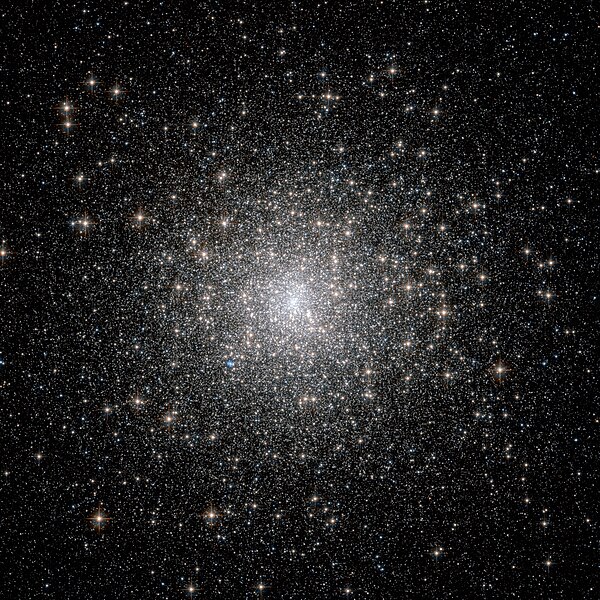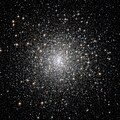File:Messier 15 HST.jpg

Dimensioni di questa anteprima: 600 × 600 pixel. Altre risoluzioni: 240 × 240 pixel | 480 × 480 pixel | 768 × 768 pixel | 1 024 × 1 024 pixel | 2 048 × 2 048 pixel | 4 089 × 4 089 pixel.
File originale (4 089 × 4 089 pixel, dimensione del file: 4,55 MB, tipo MIME: image/jpeg)
Cronologia del file
Fare clic su un gruppo data/ora per vedere il file come si presentava nel momento indicato.
| Data/Ora | Miniatura | Dimensioni | Utente | Commento | |
|---|---|---|---|---|---|
| attuale | 10:42, 4 mag 2011 |  | 4 089 × 4 089 (4,55 MB) | Originalwana | higher res |
| 22:12, 18 feb 2011 |  | 1 280 × 1 280 (721 KB) | Jmencisom | {{Information |Description ={{en|1=The dazzling stars in Messier 15 look fresh and new in this image from the NASA/Hubble Space Telescope, but they are actually all roughly 13 billion years old, making them some of the most ancient objects in the Unive |
Pagine che usano questo file
La seguente pagina usa questo file:
Utilizzo globale del file
Anche i seguenti wiki usano questo file:
- Usato nelle seguenti pagine di af.wiki.x.io:
- Usato nelle seguenti pagine di ca.wiki.x.io:
- Usato nelle seguenti pagine di ce.wiki.x.io:
- Usato nelle seguenti pagine di cs.wiki.x.io:
- Usato nelle seguenti pagine di de.wiki.x.io:
- Usato nelle seguenti pagine di diq.wiki.x.io:
- Usato nelle seguenti pagine di en.wiki.x.io:
- Usato nelle seguenti pagine di en.wikiversity.org:
- Usato nelle seguenti pagine di eo.wiki.x.io:
- Usato nelle seguenti pagine di eu.wiki.x.io:
- Usato nelle seguenti pagine di fr.wiki.x.io:
- Usato nelle seguenti pagine di gd.wiki.x.io:
- Usato nelle seguenti pagine di id.wiki.x.io:
- Usato nelle seguenti pagine di it.wikibooks.org:
- Usato nelle seguenti pagine di ja.wiki.x.io:
- Usato nelle seguenti pagine di ko.wiki.x.io:
- Usato nelle seguenti pagine di mg.wiki.x.io:
- Usato nelle seguenti pagine di ml.wiki.x.io:
- Usato nelle seguenti pagine di ms.wiki.x.io:
- Usato nelle seguenti pagine di nds.wiki.x.io:
- Usato nelle seguenti pagine di nl.wiki.x.io:
- Usato nelle seguenti pagine di no.wiki.x.io:
- Usato nelle seguenti pagine di pl.wiki.x.io:
- Usato nelle seguenti pagine di pt.wiki.x.io:
- Usato nelle seguenti pagine di ru.wiki.x.io:
- Usato nelle seguenti pagine di simple.wiki.x.io:
- Usato nelle seguenti pagine di sl.wiki.x.io:
- Usato nelle seguenti pagine di tr.wiki.x.io:
- Usato nelle seguenti pagine di tt.wiki.x.io:
- Usato nelle seguenti pagine di uk.wiki.x.io:
- Usato nelle seguenti pagine di www.wikidata.org:
- Usato nelle seguenti pagine di zh-yue.wiki.x.io:
- Usato nelle seguenti pagine di zh.wiki.x.io:
